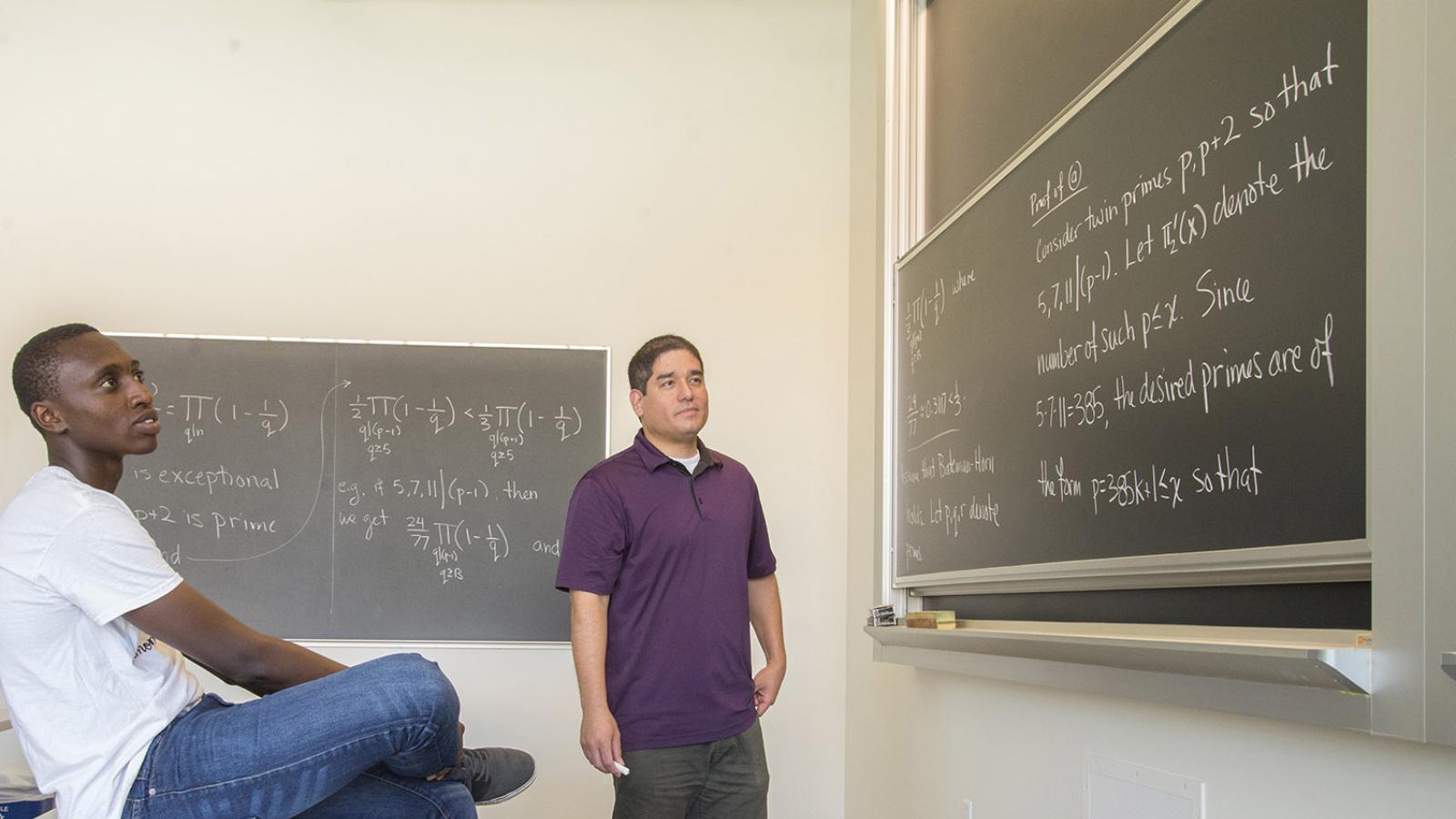Pomona College Professor of Mathematics Stephan Ramon Garcia has been awarded a $239,937 National Science Foundation (NSF) grant to study operator theory and its connections. The three-year grant is the fifth NSF award for Garcia, who also holds the title of W.M. Keck Distinguished Service Professor.
The funding also helps support undergraduate research opportunities for Pomona College students, notes Garcia, a fellow of the American Mathematical Society and winner of the organization’s inaugural Dolciani Prize for Excellence in Research in 2019.
“One of the reasons that I wanted to come to a place like Pomona is that I'd have the opportunity to work with the brightest undergraduates in the country,” he says. “I started working with undergraduates while I was a postdoc and then realized that while they're really capable of some incredible things, they have a lot of intellectual curiosity and energy and they come unencumbered with things that graduate students would know or be indoctrinated by.”
Those qualities allow young students to ask fresh questions, says Garcia, who in addition to his teaching and research also works with several seniors each year as they complete the thesis projects required for the mathematics major.
Students who have conducted research under Garcia’s guidance include Elena Kim ’21, recipient of a 2021 NSF Graduate Research Fellowship grant and the 2021 Alice T. Shafer Mathematics Prize, an award established by the Association for Women in Mathematics (AWM) that is presented to one female undergraduate in the nation each year. Garcia and Konrad Aguilar, assistant professor of mathematics, co-advised Kim’s senior thesis work.
Other students of Garcia’s include Paula Burkhardt-Guim ’16, who is completing a Ph.D. at UC Berkeley and received a 2018 NSF Graduate Research Fellowship, and Elvis Kahoro ’20, whose work led to an article co-authored with Garcia in the journal Experimental Mathematics. And although students more typically begin engaging in research as sophomores or after they’ve taken linear algebra or beyond, current student Jiahui Yu ’23 began working with Garcia when she was still a first-year student.
Math is a field that non-mathematicians might not realize is ripe for research, Garcia understands.
“I think a lot of people when they hear about mathematics research, they're sort of puzzled because they don't know what that could possibly be,” he says.
“As you know, calculus is where most people stop, or maybe even before that. If you think about calculus, you're looking at Newton and Leibniz and the Bernoullis, people who have been dead for a long, long, long time. Mathematics is one of the strange areas in the sense that the common layperson's understanding of the topic ends in the 1600s. They're sort of unaware of the 300, 400 years of new mathematics that has been developed since then.
“If you compare this to something like biology, certainly the public's perception of biology is much different than math. They know about cells and viruses and DNA and proteins. In physics, people know about black holes. They know about atoms. They're familiar with radio waves. So they're just so much closer to the present day. And I think when you look at math, there is a huge temporal disconnect in terms of where people are [in their understanding].”
